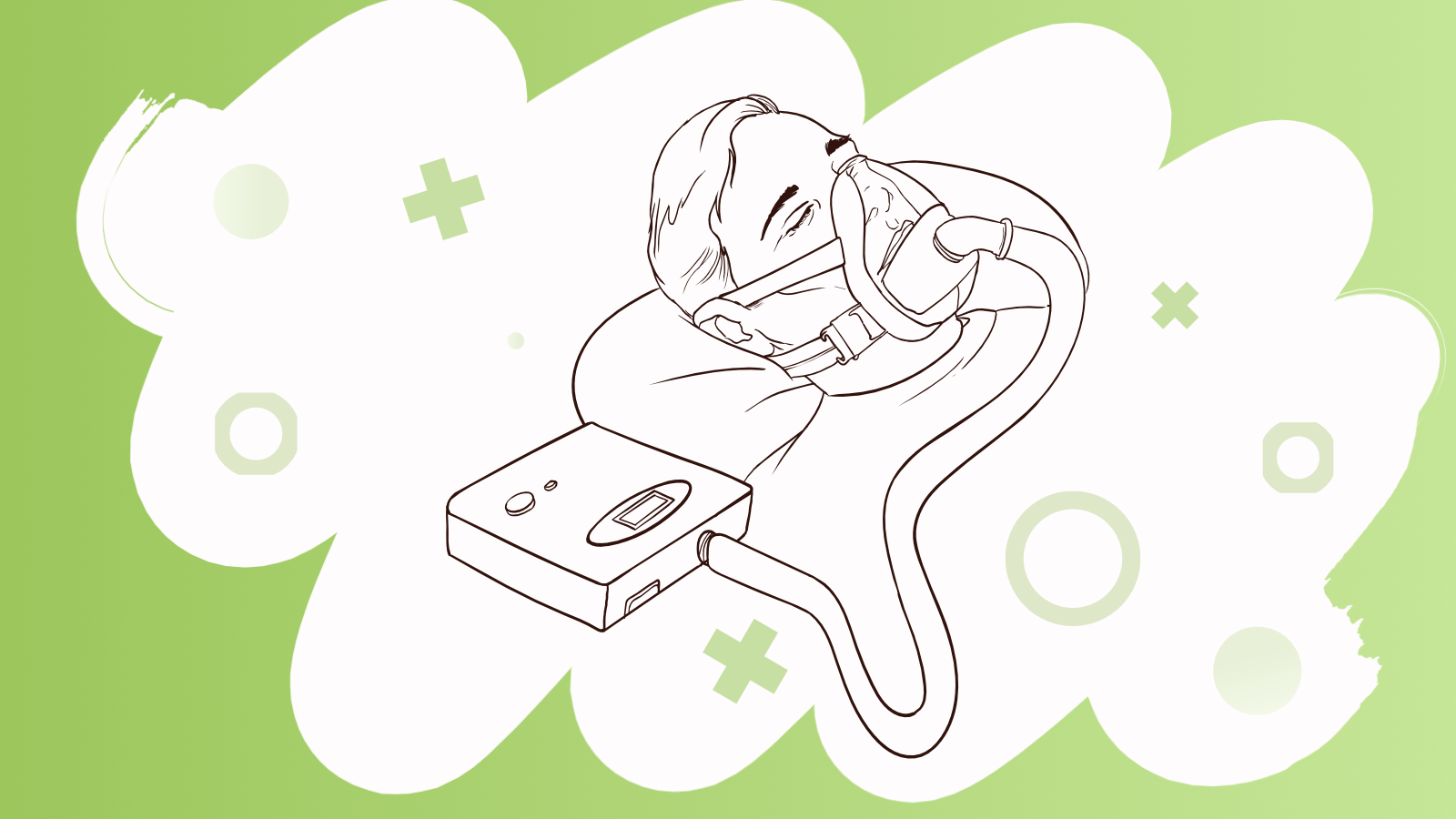Examining how the various PAP therapies available compare to help you determine what might be best for you or your loved one’s treatment needs.
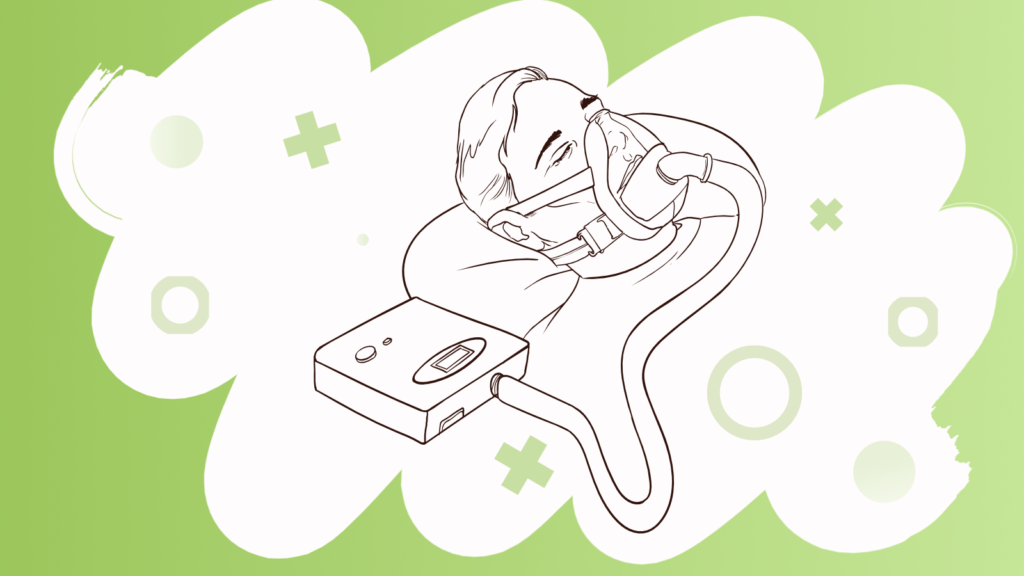
According to the MSD Manual, 2 to 9% of adults suffer from sleep apnea.
Fortunately, as awareness of this serious sleep condition has risen and technologies have improved, diagnosing and treating sleep apnea is both more accessible and affordable than ever before.
But advances in technology have also led to the use of multiple treatment types, all of which are named with a sea of acronyms. Not sure whether you need a BiPAP or APAP machine?
Why would you choose a CPAP machine over other options?
What is ASV?
We’ll answer these questions and more as we take a look at — and compare — common PAP therapies available today!
Common Terms Defined
Before we can dive into comparing the different therapies available (and the machines which support them) we need to make sure a few commonly used terms are clearly understood.
All of these therapies are similar in many ways, so the little details make all the difference.
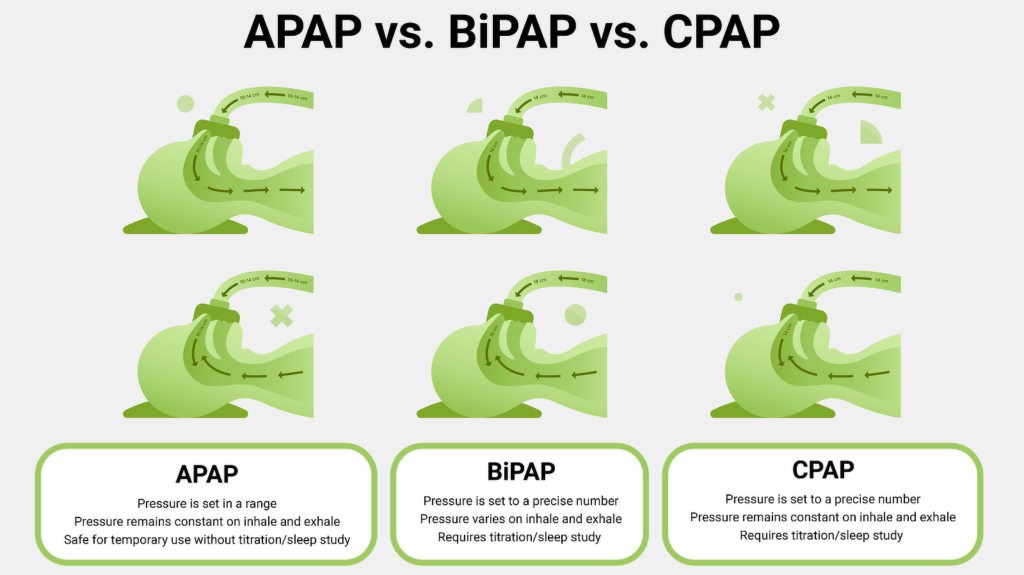
Talking about those details will require that you understand the following terms:
- PAP or Positive Airway Pressure: PAP is the basis of all the therapies we’ll discuss and compare in this guide. As the name suggests, it involves filling your airway and windpipe with air under positive pressure. This pressure essentially pushes and holds them open, preventing obstruction and allowing you to breathe more clearly.
- EPAP or Expiratory Positive Airway Pressure: EPAP is the measure of pressure when you’re exhaling or breathing out.
- IPAP or Inspiratory Positive Airway Pressure: IPAP is the measure of pressure when you are inhaling or breathing in.
With these basics out the way, we can now look at how each PAP therapy approach makes subtle changes to the user experience, address common PAP issues, or provide special treatment and support for specific conditions.
Four PAP Approaches Explored
Let’s look at the three most common PAP therapy technologies used, we’ll start with the most popular and then look at alternatives and why you might want to use one of them instead.
CPAP or Continuous Positive Airway Pressure
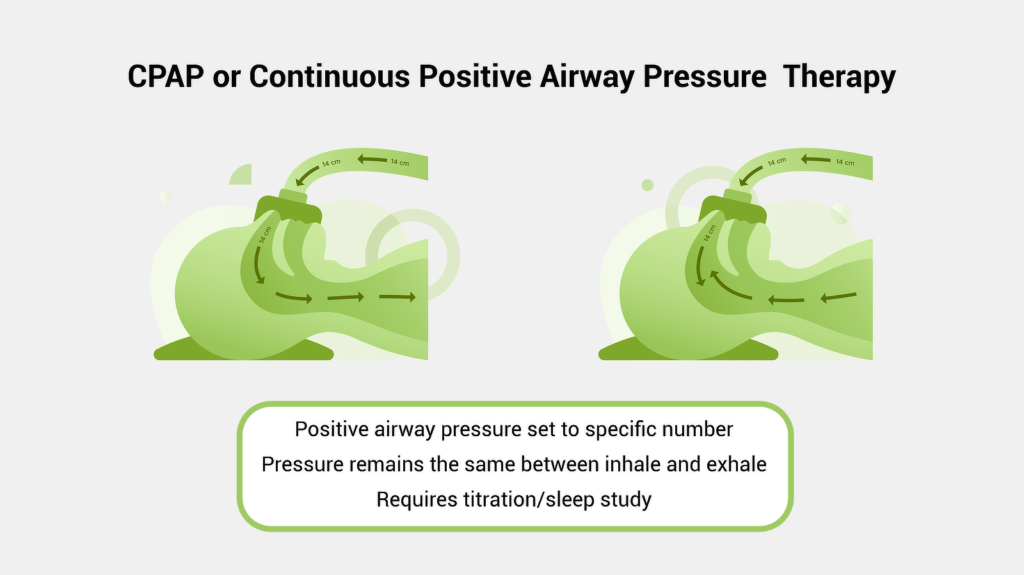
As the name implies, CPAP machines are set to provide a single rate of pressure on both inhale (IPAP) and exhale (EPAP).
CPAP Machine Pros:
- The most affordable option
- Most common option used in Ontario
- Adjustable and effective for a range of sleep apnea cases
CPAP Machine Cons:
- Requires titration and a sleep study to safely and accurately treat symptoms
- May cause discomfort during sleep
- May not account for multiple sleeping positions, night-to-night variability, or complex apnea cases
APAP or Autoset Positive Airway Pressure
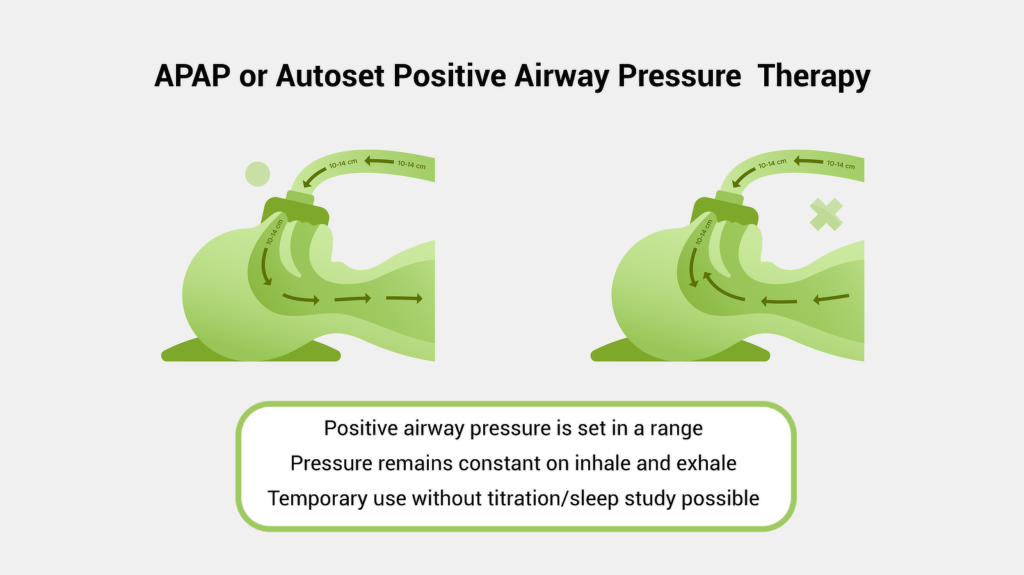
APAP machines allow your doctor to set a range of pressures for use during sleep.
This means if you change positions, experience stronger systems during REM sleep, or otherwise need a more customized treatment, APAP might be the option for you.
However, it’s important to note that IPAP and EPAP levels remain identical to each other as the pressure moves within its allowed range.
Because the machines operate in a range, they’re often safer for use without titration or sleep study.
This means some doctors might recommend one upon initial diagnosis to provide relief while determining the exact recommended pressures and machine types for you.
While mask fit is important for all machine types, APAP machines adjust pressure dynamically based on sensors in the machine.
This makes proper mask fit critical for safe and effective operation of all Autoset Positive Airway Pressure machines.
APAP Machine Pros:
- Accounts for multiple sleep positions or varying severity of apnea symptoms
- Often available without a sleep study for temporary use
- Most commonly prescribed in Canada outside Ontario
- May relieve discomfort experienced with a traditional CPAP machine
APAP Machine Cons:
- More expensive than traditional CPAP machines
- Highly reliant on mask fitment
BiPAP or Bi-Level Positive Airway Pressure
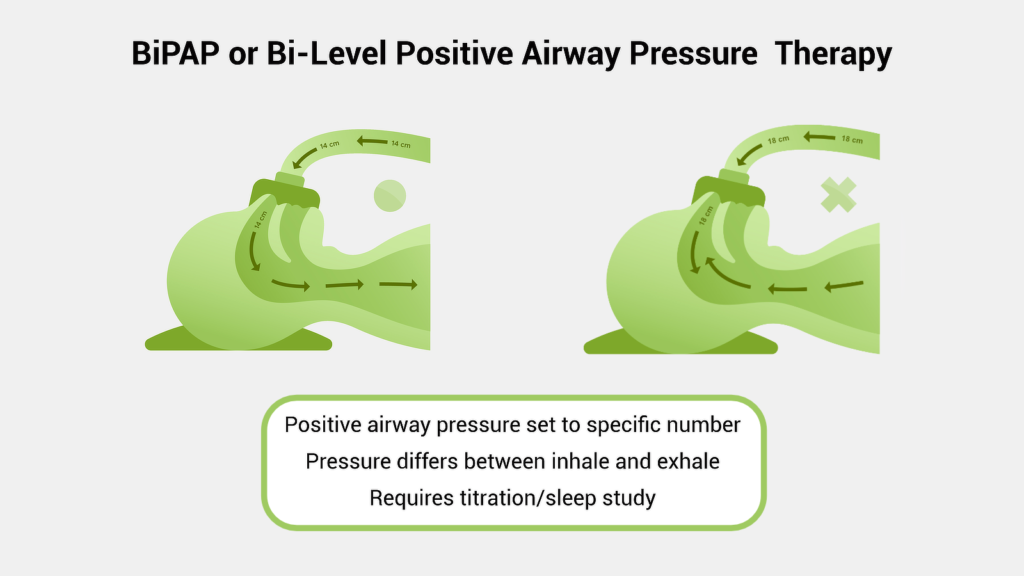
BiPAP provides yet a different approach than either APAP or CPAP.
Unlike CPAP or APAP machines, it allows your doctor to set different IPAP and EPAP levels.
However, both of these levels remain the same while you sleep.
This type of machine is commonly used for people with more severe apnea which makes it difficult to tolerate a higher EPAP but requires a higher IPAP to maintain breathing rates.
BiPAP Machine Pros:
- Adjustable rates allow for greater comfort during use
- Effective in reducing hypoxemia or CO2 retention during sleep
- Effective in reducing aerophagia or discomfort caused by swallowing air during sleep
BiPAP Machine Cons:
- More expensive than CPAP machines
- More complex than APAP machines
ASV or Adaptive Servo-Ventilation
ASV is a variation on BiPAP therapy typically reserved for cases involving cardiac complications or central sleep apnea.
It utilizes an EPAP and IPAP to provide comfortable respiration while also detecting any pauses or gaps in your breathing patterns.
If it detects a pause or other irregularity, it applies additional IPAP pressure to help stabilize your breathing rhythms.
As this is a specialized treatment method, we’ll not dive into the pros and cons.
Instead, we’ll remind you that sleep apnea is a complex and serious sleep condition.
If you suspect you or someone you love would benefit from PAP therapies or need a high-quality CPAP machine, be sure to consult with a medical professional for guidance and testing.
Common PAP Therapy Questions
1. Which PAP Option is Best for Me?
There is no single answer that will fit everyone.
All information in this article is for informational purposes only and should never be considered medical advice or diagnosis.
While home tests for sleep apnea are available, they still require medical intervention to help interpret results, guide therapy choices, and find an optimal solution to address your symptoms.
Also, requirements may vary based on your region. For example, Ontario does not allow home tests, requiring sleep labs in all cases.
Please consult with your primary care physician or another medical professional for the best guidance for your specific needs.
2. Which PAP Option is Most Common?
Again, this will depend on your region. CPAP therapy is the most commonly prescribed treatment method in Ontario due to their sleep lab requirements.
However, for the rest of Canada, APAP Is most common due to its flexibility, ease of use, and accessibility.
3. What Are The Complications of PAP Therapy?
Side effects often vary based on the specifics of your treatment and sleep apnea characteristics.
However, common complications you might experience include:
- Eye dryness and discomfort
- Skin irritation near mask contact points
- Airway irritation
- Aerophagia
- Excessive gas
In many cases, proper mask choice and fit will greatly reduce any complications experienced.
4. Do PAP Machines Require Adjustment?
As with most medical therapies, regular monitoring of any complications or improvements you’re experiencing will be critical to establishing ideal pressure levels.
In most cases, once ideal levels are discovered using a sleep study and titration or home sleep apnea test, these levels will remain stable for a long period of time.
However, if you experience drastic changes to your sleep situation, lifestyle, or symptoms, your primary care physician or sleep specialist might need to adjust machine settings.
Furthermore, if you experience significant weight loss or weight gain, be sure to reassess mask fit and needs to ensure effective treatment.
This might not require a change in pressure levels or machine type, but could require a different mask size or adjusting your mask fit to prevent leakage and irritation.
Key Takeaways
- Most PAP therapy differences center around differences in overall PAP (positive airway pressure) rates and IPAP (pressure during inhaling) and EPAP (pressure during exhaling) strengths.
- APAP is the most commonly prescribed PAP therapy throughout Canada. However, CPAP is the most commonly prescribed PAP therapy in Ontario due to provincial requirements.
- APAP allows your sleep specialist or doctor to set a range of pressures to account for differences in apnea symptoms in different sleep positions or sleep states. However, rates between IPAP and EPAP remain consistent.
- BiPAP sets a consistent rate as with CPAP but allows for independent IPAP and EPAP rates to ease breathing difficulties and improve comfort.
- ASV is a specialized form of BiPAP treatment that’s sort of an Auto BiPAP. It provides a backup rate to stabilize specialized apnea symptoms for complex or central sleep apnea cases.
As Canada’s leading online CPAP supply store in customer satisfaction, CPAP Supply not only offers one of the best selections of CPAP, APAP, and Bi-Level PAP machines from leading manufacturers, but we make you the center of the purchase experience. We understand that the sheer amount of options and all of the medical terms might seem confusing. Whether you’re looking for your first CPAP machine or simply want a source of mask parts and CPAP accessories from a source that will focus on your needs, we’re ready to help! Browse our selection of products or contact us today to see how we can assist you!
References
- Advanced Sleep Medicine Services, Inc: What is a CPAP Machine? (Difference Between CPAP, APAP, BiPAP and ASV)
- Healthline: Differences Between CPAP, APAP, and BiPAP as Sleep Apnea Therapies
- CPAP.com: BiPAP Machine vs APAP Machine: Differences and Uses of Both
- Sleep Foundation: APAP vs. CPAP
- MSD Manual Professional Version: Obstructive Sleep Apnea
- Sleep Foundation: CPAP vs. BiPAP
- Breathe Pennsylvania: PAP Therapy: CPAP, APAP, BiPAP. What’s the Difference?
- ResMed: What is APAP? And How is it Different than CPAP?
- Terry C Ralle: BiPAP Vs. CPAP Vs. APAP: Which PAP Machine Is The Best For You?
- The American Association of Sleep Technologists (AAST): Pros & Cons of APAP Therapy
- The American Sleep Apnea Association (ASAA): The Difference Between Auto CPAP and Bi-Level CPAP
- Sleep Resolutions: Difference Between APAP, BiPAP, CPAP, and ASV
- The American Sleep Association (ASA): CPAP and BiPAP: Which One is Best For You?

